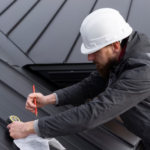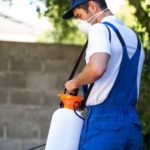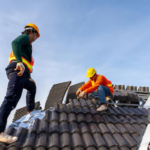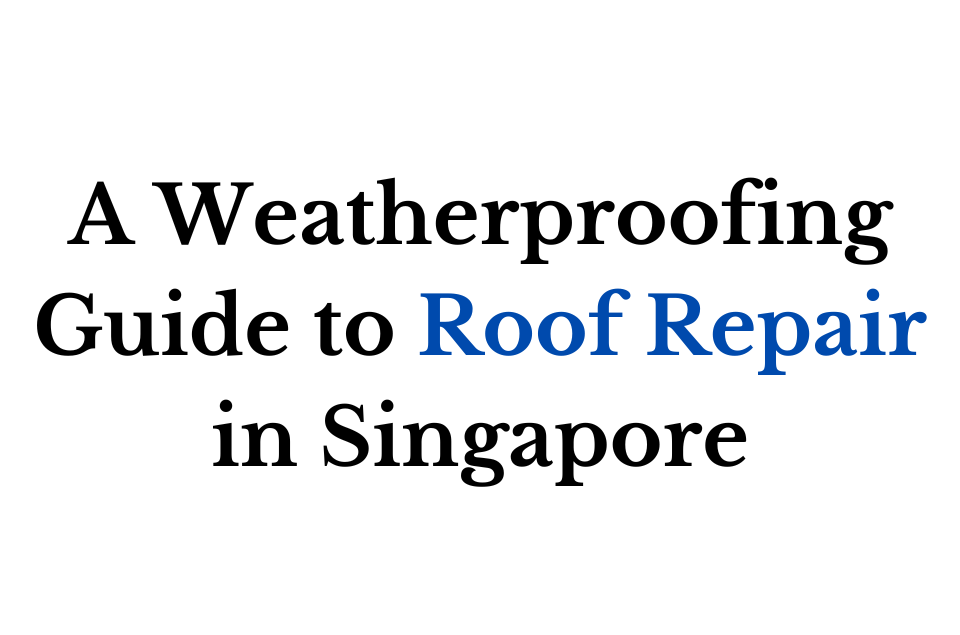In the tropical climate of Singapore, where intense heat, heavy rainfall, and high humidity are the norm, maintaining a sturdy and leak-free roof is crucial for both residential and commercial buildings.
Roof repair in Singapore is a specialized service that addresses the unique challenges posed by the city-state’s weather conditions and urban landscape. This comprehensive guide explores the intricacies of roof repair in Singapore, from understanding the service to recognizing signs of damage and the benefits of timely repairs.
What is Roof Repair in Singapore?
Roof repair in Singapore refers to the process of identifying, diagnosing, and fixing issues with roofing systems on buildings throughout the city-state. This service is tailored to address the specific types of roofs commonly found in Singapore, which include:
- Flat Roofs: Often seen on HDB flats and commercial buildings
- Pitched Roofs: Common in landed properties and some condominiums
- Metal Roofs: Used in industrial buildings and some modern architectural designs
- Tile Roofs: Found in traditional and colonial-style buildings
Key aspects of roof repair in Singapore include:
- Waterproofing: Crucial in Singapore’s rainy climate
- Heat Resistance: Important for managing the intense tropical sun
- Mold and Algae Prevention: Addressing issues caused by high humidity
- Structural Integrity: Ensuring roofs can withstand occasional strong winds
- Compliance with BCA Regulations: Adhering to Singapore’s building codes and standards
How Does Roof Repair in Singapore Work?
The process of roof repair in Singapore typically follows these steps:
Inspection and Assessment:
- Professional roofers conduct a thorough examination of the roof
- Use of advanced tools like thermal imaging cameras to detect hidden issues
Diagnosis:
- Identification of specific problems such as leaks, cracks, or structural weaknesses
- Assessment of the extent of damage and its causes
Proposal and Quotation:
- Preparation of a detailed repair plan
- Provision of a cost estimate for the required work
Preparation:
- Securing necessary permits if required
- Setting up safety equipment and preparing the work area
Repair Execution:
- Carrying out repairs using appropriate techniques and materials
- This may include patching, sealing, replacing damaged sections, or applying new waterproofing layers
Quality Check:
- Conducting tests to ensure the effectiveness of repairs
- This often includes water testing to check for leaks
Clean-up and Handover:
- Cleaning the work area and disposing of debris
- Providing the client with a report and warranty information
Benefits of Seeking Roof Repair in Singapore
Engaging professional roof repair services in Singapore offers numerous advantages:
Prevention of Water Damage:
- Timely repairs prevent leaks that can cause extensive interior damage
- Protects valuable assets and prevents mold growth
Energy Efficiency:
- Well-maintained roofs provide better insulation
- Reduces energy costs associated with cooling in Singapore’s hot climate
Extended Roof Lifespan:
- Regular repairs and maintenance can significantly extend the life of a roof
- Delays the need for costly full roof replacements
Compliance with Regulations:
- Ensures that roofs meet Singapore’s building standards and regulations
- Important for insurance purposes and property valuations
Aesthetic Improvement:
- Repairs can restore the appearance of buildings
- Enhances property value and curb appeal
Safety:
- Addresses structural issues that could pose safety risks
- Particularly important in Singapore’s high-rise urban environment
Customized Solutions:
- Professional services offer tailored repairs for different roof types and materials
- Addresses specific challenges posed by Singapore’s climate
Cost-Effective in Long Run:
- Regular maintenance and timely repairs prevent more expensive damage
- Helps in budgeting and financial planning for property management
Peace of Mind:
- Professional repairs come with warranties and guarantees
- Provides assurance during Singapore’s intense rainy seasons
Environmental Benefits:
- Proper roof maintenance can contribute to building sustainability
- Aligns with Singapore’s green building initiatives
Tools Used in Roof Repair Singapore
Roof repair professionals in Singapore utilize a variety of specialized tools:
Moisture Meters:
- Detect hidden moisture in roofing materials
Thermal Imaging Cameras:
- Identify heat loss and potential leak areas
Pressure Washers:
- Clean roofs before repairs and remove stubborn stains
Roofing Nailers:
- Quickly and securely fasten roofing materials
Caulking Guns:
- Apply sealants and adhesives precisely
Safety Harnesses and Anchors:
- Ensure worker safety, especially on high-rise buildings
Roofing Knives and Cutters:
- Precisely cut roofing materials
Ladders and Scaffolding:
- Provide safe access to roofs
Power Drills and Saws:
- For various cutting and fastening tasks
Heat Welders:
- Used for joining synthetic roofing membranes
Spray Foam Equipment:
- Apply insulation and sealants
Infrared Thermometers:
- Measure surface temperatures to identify potential problem areas
Drones:
- Increasingly used for roof inspections, especially on large or high buildings
Roof Coating Sprayers:
- Apply protective coatings evenly
Safety Gear:
- Including helmets, gloves, and non-slip footwear, crucial in Singapore’s safety-conscious environment
Signs You Need Roof Repair in Singapore
Recognizing the signs that indicate the need for roof repair is crucial. In Singapore’s climate, these signs may include:
Water Stains on Ceilings or Walls:
- Often the most obvious sign of a roof leak
Mold or Mildew Growth:
- Indicates persistent moisture problems, common in Singapore’s humid climate
Damaged or Missing Roof Tiles/Shingles:
- Can lead to leaks if not addressed promptly
Bubbling or Peeling Paint on Ceilings:
- Often a result of water seepage through the roof
Increased Energy Bills:
- May indicate poor roof insulation, a significant issue in Singapore’s hot climate
Granules in Gutters:
- For buildings with asphalt shingles, indicates roof deterioration
Sagging Roof Deck:
- A serious structural issue that requires immediate attention
Daylight Through Roof Boards:
- Visible from the attic, indicates gaps in the roof structure
Algae or Plant Growth on Roof:
- Common in Singapore due to high humidity, can damage roofing materials
Clogged or Damaged Gutters:
- Can lead to water backup and roof damage
Blistering or Cracking of Roof Surface:
- Often seen on flat roofs, indicates weathering and potential leaks
Age of the Roof:
- Even without visible damage, roofs nearing the end of their lifespan may need inspection and roof repair
After Severe Weather:
- Inspection is advisable following unusually heavy rains or strong winds
Rust on Metal Components:
- Indicates moisture issues and potential weak points
Deteriorating Roof Flashing:
- Around chimneys, vents, and joints, can lead to leaks if damaged
Conclusion
Roof repair in Singapore is a critical service that addresses the unique challenges posed by the city-state’s tropical climate and urban landscape. From protecting against intense rainfall to managing heat and humidity, a well-maintained roof is essential for the longevity and efficiency of buildings in Singapore.
Understanding the process of roof repair, recognizing its benefits, and being aware of the signs that indicate the need for repairs are crucial for property owners and managers. The specialized tools and techniques used by professional roof repair services in Singapore ensure that repairs are carried out effectively and in compliance with local regulations.
As Singapore continues to develop and face new environmental challenges, the importance of maintaining robust and efficient roofing systems cannot be overstated. Regular inspections, timely repairs, and the use of advanced roofing technologies will play a vital role in ensuring that buildings in the Lion City remain protected, energy-efficient, and structurally sound for years to come.
By prioritizing roof maintenance and promptly addressing repair needs, property owners in Singapore can safeguard their investments, enhance energy efficiency, and contribute to the overall resilience and sustainability of the urban environment. In a city where the skyline is as much a part of its identity as its street-level attractions, maintaining the integrity of roofs is not just a matter of property care, but a contribution to the enduring beauty and functionality of Singapore’s architectural landscape.












